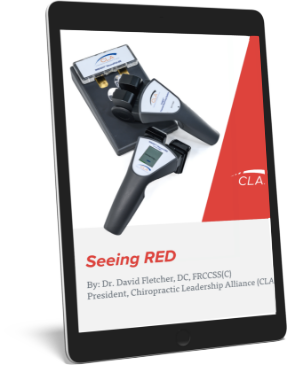By Dr. Christopher Kent
Some chiropractors fear that their profession will follow the course of osteopathy. As sociologist Wardwell observed, graduates of osteopathic colleges are trained not as competent manipulators, but as competent allopathic physicians. [1] Some D.C.s feel that chiropractic should consist of the general practice of medicine, including the use of drugs, minor surgery, and obstetrics. Other chiropractors perceive their profession as an “holistic” alternative to traditional medicine, and incorporate a wide range of “natural” therapies. Given today’s political climate, it seems highly improbable that plenary licensure as physicians and surgeons is a viable option.
Wardwell has proposed that chiropractic become a limited branch of medicine, such as dentistry or podiatry. He has suggested that chiropractors should confine their activities to the treatment of musculoskeletal disorders. Socalled chiropractors who accept this model are encouraging their colleagues to abandon chiropractic terminology, such as “vertebral subluxation,” “analysis,” and “adjustment.” They perceive the chiropractor as but one of many practitioners who employ “manipulative therapy” in the treatment of facet joint dysfunction.
A disturbing number of D.C.s regard acknowledgment of universal and innate intelligence as “religion.” [2,4,5] In short, a perception that medicine is “scientific” and chiropractic is “unproven” seems to pervade a growing element of our profession. This perspective has resulted in a low perceived value of our unique principle and practice.
Consider the fate of another alternative health care profession, naturopathy. Today, only a few new practitioners are entering the field, and only a handful of states have provisions for licensing naturopathic physicians. What caused the decline of naturopathy? According to Wardwell, “Naturopathy lacked a specific theoretical focus…” [2]
What has happened to chiropractic’s unique philosophy? Morinis wrote, “…in general, the 85 year history of chiropractic has been marked by a transition in emphasis from teaching and metaphysics to profession and techniques. As a medical anthropologist, I see these changes as being adaptive strategies…attempting to meet a social threat.” Morinis stated that these were appropriate survival strategies for the time. Today, the situation has changed.
According to Morinis, “Having already begun to lose the exclusive practice of spinal manipulation to allopaths and physiotherapists, only the chiropractic philosophy significantly distinguishes the chiropractic practitioner. And yet the philosophy is kept hidden away. In response to social threats to its existence, chiropractic has accepted the materialist world of the allopaths. It has done so in fear of being labelled quackery and this was undoubtedly a good strategy to follow at one time. The public knows next to nothing of chiropractic philosophy of healing and its mechanisms. If hospitals offer spinal manipulation, a chiropractor offers nothing else. This distortion of the chiropractic tradition can only be overcome by a reevaluation of the place of theory in chiropractic… Dispossessed of its philosophy, chiropractic is dispossessed of its uniqueness, and perhaps its future.” [3]
Would it not be absurd to apply the rules of football to a baseball team claiming that, after all, both are ball games? It is no less foolish to apply allopathic standards to chiropractic. Even in fields other than allopathic medicine, much clinical research is essentially allopathic in nature. That is, the outcome assessment is often the effect of the experimental treatment on the patient’s subjective perception of symptoms. Chiropractic and medicine are different “games” with different objectives. As such, we play by different rules.
Chiropractic adjustment is not a subset of “manipulative therapy.” It cannot be viewed like a drug or electrical modality that can be consistently applied without regard for the unique skills of the doctor, or the uniqueness of each interaction between a specific doctor and a specific patient. It is not just another treatment technique in a long and growing litany of treatment techniques. Nor can its value be determined by a patient’s subjective symptomatic response.
Chiropractic’s unique approach is based upon nontherapeutic objectives. The vertebral subluxation is recognized as an impediment to the expression of optimum health. Chiropractic adjustments are designed to remove interference, thus placing the patient on a “more optimum” physiologic path. Outcome assessments used to evaluate chiropractic adjustments must be based upon reliable indicators of structural and functional integrity.
Chiropractic is not a limited branch of physical medicine treating sprains and strains. Chiropractic is a whole body approach which emphasizes the supremacy of the nervous system in controlling human physiology. Doctors of chiropractic are not limited medical practitioners. Our unique contribution to health care goes beyond a method adjustment of the spine. It embraces a philosophical paradigm radically different from that of allopathy. To forsake our philosophy, limit our field of inquiry to science, and deny that the spiritual component of human existence is an inherent aspect of the healing process is to deny the very basis for our existence as a separate and distinct profession.
Strengthened by increased recognition, we must now direct our efforts toward an increased awareness of why we sought that recognition. The culture wants what we have to offer improved qualityoflife. Do we as a profession have the vision and commitment to deliver the goods?
References
1. Wardwell WI: “Social factors in the survival of chiropractic.” Sociological Symposium, no. 22, Spring 1978.
2. Wardwell WI: “Present and future role of the chiropractor.” In Haldeman S (ed): “Modern Developments in the Principles and Practice of Chiropractic.” AppletonCenturyCrofts. Norwalk, CT, 1980.
3. Morinis EA: “Theory and practice of chiropractic: An anthropological perspective.” JCCA 24(3):118, 1980.
4. Wardwell WI: A marginal professional role: “The chiropractor.” Soc Force 30:339, 1952.
5. Wardwell WI: “The impact of spinal manipulative therapy on the health care system.” In Goldstein M (ed): The Research Status of Spinal Manipulative Therapy. DHEW publication (NIH) 76998, 1975.

























































































































































